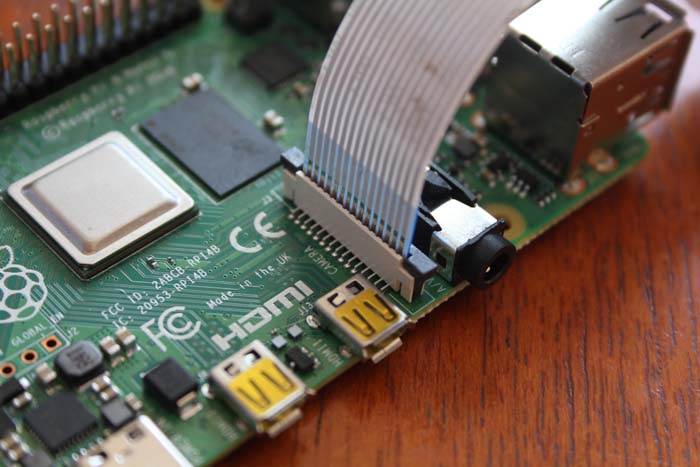

On the back of the camera, you will find a similar cable port. Removing the Cable from the Camera Itself: You will feel a resistance if it’s inserted solidly.

If the cable is not properly held in place, it will slide out of the port. Hold the Pi in one hand, and the camera cable in the other. Because you’re pushing it down, more blue will be exposed. To close the port and keep the cable snugly in place, push the top of the port while holding the cable with the other hand. This photo shows the beginning of the insertion. Insert the cable so that almost no blue is showing. The cable has to be inserted with the right orientation: the blue has to face the Ethernet port, and the silver side is facing the HDMI port. Please note that there is another port on the Pi board that looks just the same, but that other one is not meant for the camera. To open the port, use two fingers and lift the ends up slightly.

On the original Raspberry Pi B, it is between the Ethernet port and the HDMI port. On the Raspberry Pi B+, 2 and 3, the camera port is between the audio port and the HDMI port. Open the Camera Port on the Raspberry Pi: This is a step-by-step explanation but we also have a video explanation if you prefer. In other words, remove the Pi from the GoPiGo, or the GrovePi board, in order to have just the Pi. It is best to install the camera to the Raspberry Pi without the extra boards. So here’s a step-by-step explanation about how to connect that useful little magical eye! Before we begin to Install the Raspberry Pi Camera: The Raspberry Pi Camera is useful for all of Dexter products, be it the GoPiGo, the BrickPi, or the GrovePi.


 0 kommentar(er)
0 kommentar(er)
